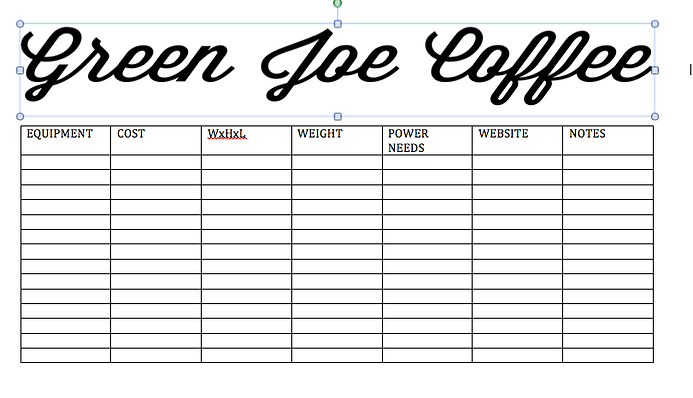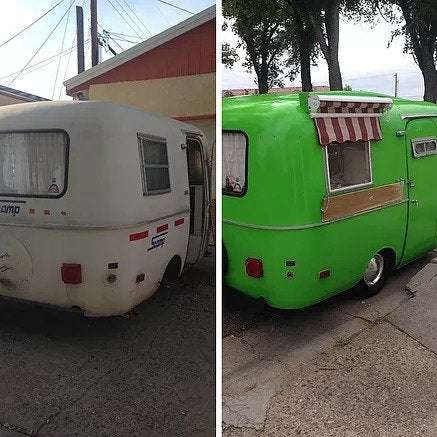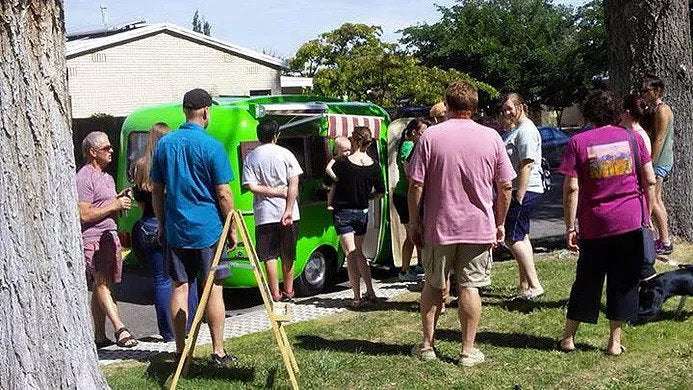How to Decide on a Trailer for a Mobile Coffee Trailer Business
Not sure how to pick a trailer for your coffee trailer business? Read this blog to get more info…
So, I wanted to cover the topic of how to pick a trailer for a coffee trailer business. After building the Green Joe Coffee Truck, I learned from a few mistakes. This article is to share the knowledge that I learned through the growing process.
I picked my camper based upon it’s visual curb appeal. It was sexy. The little camper pops out to the eye and this was my main criteria. Boy, I wish I would have had this article…
Step One: Know your Menu
Know your menu. Your menu will tell you about your equipment. Your equipment will tell you about the room you need, the weight you need to support and the supporting equipment you will need. Without your menu, it’s going to be hard to move on.
Let me elaborate: The health department breaks up food into how potentially hazardous it is to the public. Seafood having the highest potential, shelf stable baked goods having the least. Coffee is pretty safe. That’s why we see it at our mechanic shop and so on. Milk however, is not. It requires a fridge that will maintain its temp. Therefore, it is Temperature Controlled for Safety (TCS).
TCS foods require a lot of extra work and equipment. You need to be able to wash your hands, wash the dishes, sanitize everything. You need commercial equipment to ensure safety to the public. Blah, blah, blah. So, basically, once you add TCS to you menu, your headache skyrockets.
So, when then have to decide, are we to try to find workarounds that may or may not sell well to the public or are we going to take this beast head one.
In my case, I grabbed the bull by the horns. I set out to learn the equipment I will need to serve coffee, lattes, cold brew and frappes.
Step Two: Know your Equipment
Okay, you have your menu. Now what? Once you know your menu it’s time to dig into you equipment. You’ll need to collect this information for your spreadsheet. So, while you are scouring the internet, make sure to save links, build a spreadsheet or start collecting the bookmarks.
You will want to know: 1. Their dimensions 2. Their weight 3. Energy requirements…
Here’s a spreadsheet I would use…

Once you have a total idea on the equipment, you can start to figure out your requirements for the trailer.
Make sure you pay attention to the axle strength. I regret not doing this. I only have one axle and if that thing breaks, then my trailer will crack like an egg and I’m out of a job…
Edit: Years later after writing this blog, my frame broke. But it didn’t break quickly. It cracked and created a wobbling effect within the trailer, causing all my pipes to bust as well as my cabinets. After the third weld to the frame and repairing all my insides to the trailer, I finally sold the original Green Joe Camper. A bittersweet moment for me.
Step 3: Other Considerations
Other things that I didn’t consider at the time was the material my camper was made of and how easy it would be to attach things to it. Since my camper is made of fiberglass, every time I attach a screw to the thing, I also have add two flat washers to make sure it doesn’t cut into my walls. As you can see, this can be a pain.
The other pain in butt is trying to get something to stick to the wall. Glues don’t work. I’ve been through every glue at Home Depot. I can’t nail it. So, I’m forced to use the two flat washers/combined with a nut/bolt/locking nut. To make a long story short, being able to drill into the walls really helps.
Also, the corners of my trailer round. This makes it hard to place equipment directly against the walls. So, it lessens the points of contact with my equipment. Thus, I have to use more items to tie down my equipment.
Step 4: Research your Trailer
There is a bunch of different trailers to pick from: Teardrop, Scamps, Travel trailers..
Armed with your worksheet, you can begin to hunt for the trailer. Craiglist, Ebay, and city auctions are great places to look for a trailer.
Here is a video breaking down cost, pros and cons of different trailers.
Conclusion:
There are three major things I wish I would have thought about prior building my trailer:
- My weight and dimension requirements
- My axle weight
- Ease of attachment


